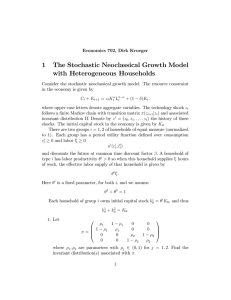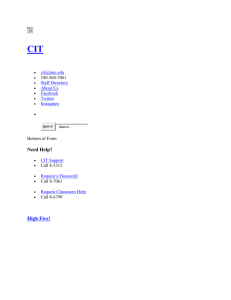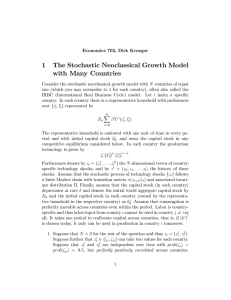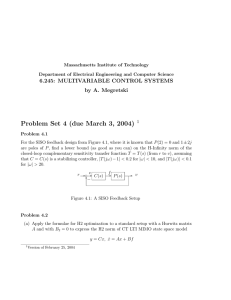Cole’s Problem:
advertisement
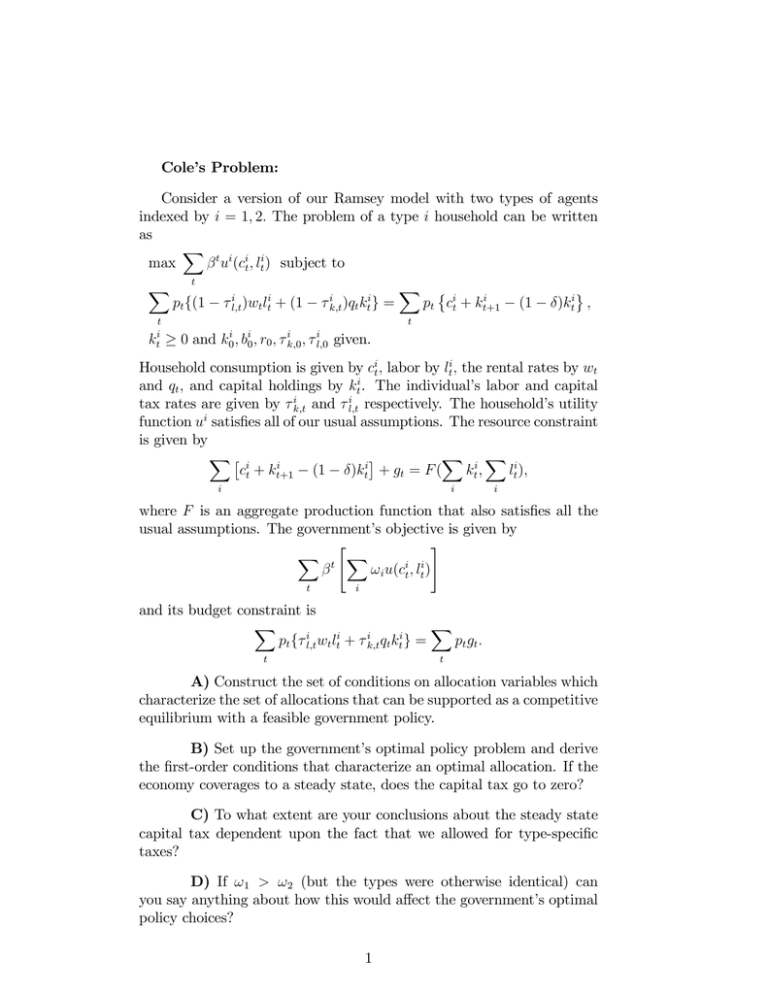
Cole’s Problem: Consider a version of our Ramsey model with two types of agents indexed by i = 1; 2: The problem of a type i household can be written as X t i i i max u (ct ; lt ) subject to X t i kt t i i l;t )wt lt pt f(1 0 and i i k;t )qt kt g + (1 k0i ; bi0 ; r0 ; i k;0 ; i l;0 given. = X i pt cit + kt+1 (1 )kti ; t Household consumption is given by cit ; labor by lti ; the rental rates by wt and qt ; and capital holdings by kti . The individual’s labor and capital tax rates are given by ik;t and il;t respectively. The household’s utility function ui satis…es all of our usual assumptions. The resource constraint is given by X X X i cit + kt+1 (1 )kti + gt = F ( kti ; lti ); i i i where F is an aggregate production function that also satis…es all the usual assumptions. The government’s objective is given by " # X X t ! i u(cit ; lti ) t i and its budget constraint is X pt f il;t wt lti + t i i k;t qt kt g = X pt gt : t A) Construct the set of conditions on allocation variables which characterize the set of allocations that can be supported as a competitive equilibrium with a feasible government policy. B) Set up the government’s optimal policy problem and derive the …rst-order conditions that characterize an optimal allocation. If the economy coverages to a steady state, does the capital tax go to zero? C) To what extent are your conclusions about the steady state capital tax dependent upon the fact that we allowed for type-speci…c taxes? D) If ! 1 > ! 2 (but the types were otherwise identical) can you say anything about how this would a¤ect the government’s optimal policy choices? 1
